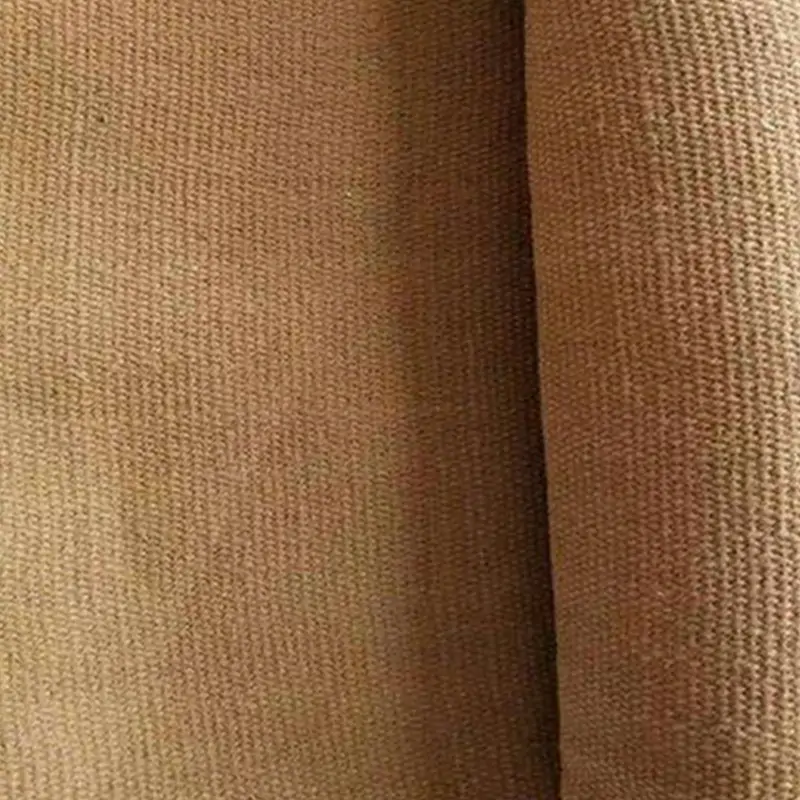High-Temperature Fabrics
From minus 60°C to 1600°C, the high temperature fabrics provide the best heat protection in high-temperature fire protection.
This article will help you to understand the best selection guide for High Temp Fabric.
Under extreme temperatures, countless high temperature fabrics have appeared in history, from hemp cotton to ceramic fiber fabrics, from 100°C to 1600°C. Finally, the following outstanding ones have been left:

Foil-Faced Insulation(550℃)
Aluminum foil fiberglass cloth is a thermal insulation material of aluminum laminate and woven glass fiber fabric.
Because glass fiber fabric has shallow flame retardant characteristics and R-value, it has powerful thermal insulation performance and fire resistance. However, glass fiber fabrics cannot prevent heat radiation, so aluminum foil lamination plays a significant role. The aluminum foil layer reflects 97% of the radiant heat. The rest of the heat transfer is perfectly blocked by the glass fiber, so this aluminum foil glass fiber fabric is the best choice for steam-heating pipeline insulation.

Silicone Fabric(287℃)
Silicone rubber-coated fiberglass cloth is highly flexible and provides excellent thermal protection. It is also water and oil-resistant, low smoke, and flame-retardant. While the base heat-treated fiberglass fabric is rated at 1000°F/550°C, the silicone coating is rated at 550°F/287°C. This makes the material easier to sew, drape, and handle.
Another advantage of silicone rubber-coated fiberglass fabric is its good tensile strength and abrasion resistance.
Under the ASTM-D-5035 standard, the tensile strength reaches 53.58kg/cm (200 lbs/inch), which means extreme wear resistance.
In addition to conventional silicone coated fabrics, you can choose stainless steel reinforced silicone fabrics with higher mechanical strength and flame retardant properties.
It is precise because silicon-coated fiberglass fabric is widely used in insulating blankets, insulation jackets, welding blankets, fire curtains, pipe insulation, and many other fields.

Ceramic Fiber Insulation(1200℃)
A ceramic fiber blanket is very suitable for high temp woven fabric.
The working temperature of ceramic fiber can reach 1600℃, so it is very suitable as the lining material of a high-temperature furnace or the insulation wrapping material in an extreme temperature environment.
In addition to high-temperature resistance, ceramic fiber paper has solid chemical resistance commonly used in acid and alkali, including but not limited to acids and concentrated alkalis, hydrofluoric, phosphoric acids, etc.

Vermiculite Coated Fabric(800℃)
Vermiculite coated e-glass cloth is a very high-performance fabric among high-temperature fabrics.
Due to the high-temperature resistance of vermiculite coated materials and the flame-retardant ability of glass fiber, it is very suitable for welding protection. Vermiculite-coated object exhibits wear-resistant characteristics, making vermiculite glass cloth highly durable and extremely resistant in challenging environments.

Silica Fabric(1000℃)
High-purity standard silica fabrics are ideal for heat shields, welding curtains, and insulation blankets because their temperature resistance exceeds 1000°C.

PTFE-Polytetrafluoroethylene can be called "special" due to its global utilization. No other plastic product can match its wide range of properties and applications.
- Outstanding temperature level resistance( -170 ° C to +320 ° C).
- Superb chemical resistance.
- Superior non-stick surface area for straightforward cleansing.
- High dielectric stamina.
- Dimensional security.
- Immune to UV, hf, and it exhibits exceptional chemical resistance.
- Safe.

Acrylic Coated Fabric(-18℃ - 149℃)
The weave-lock therapy(Polymer covered) tenses the heat-resistant material slightly to decrease tearing throughout construction. The weave-lock completed fiberglass material makes it possible for the individual to effectively reduce, stitch, and punch openings.
- Temp resistance: Glass fabric up to 550℃(1000℉)
- Acrylic coating up to 260℃(500℉)
- Corrosion resistant
- Chemical agents resistant
- Flexible, abrasion-resistant
- Waterproof

Kevlar Fabric (550°C)
Kevlar (para-aramid) is a heat-resistant, high-strength synthetic fiber, usually spun into rope or cloth, that can be used directly or as a composite material. Thanks to its high tensile strength-to-weight ratio, it is five times stronger than steel and can be used in applications such as racing sails, bulletproof vests, and modern drums that can withstand high impacts. Therefore, Kevlar fabric has not only the characteristics of high-temperature resistance but also exceptional strength making it very suitable for use in extreme environments.
Kevlar Fabric (para-aramid) Features:
- Withstands very high and very low temperatures with few adverse effects, maintaining its strength and elasticity at low temperatures (-196°C (-320.8°F))
- Lightweight with excellent specific tensile strength
- Impact and abrasion resistant
- Easy maintenance and long lifespan
I believe the above content has helped you choose the most suitable high-temperature fabric. If you have any questions, please get in touch with us.








 Top 5 Heat-Resistant Wonders: How High Silica Fiberglass Fabric Excels in Extreme Temperatures!
Top 5 Heat-Resistant Wonders: How High Silica Fiberglass Fabric Excels in Extreme Temperatures!
 Is Kevlar Fireproof? Unveiling the Truth Behind Kevlar's Flame Resistance
Is Kevlar Fireproof? Unveiling the Truth Behind Kevlar's Flame Resistance
 Do Fire Blankets Work? Understanding Their Functionality and Benefits
Do Fire Blankets Work? Understanding Their Functionality and Benefits
 2023, Heaterk's Year-End Recognition Meeting!
2023, Heaterk's Year-End Recognition Meeting!